Great Films for Classically Educated Audiences
- Cultural Compass

- Aug 13
- 9 min read
Updated: Aug 27
Contributor: Josh Bunnell
Film is a form of art that can be soul-stirring and intellectually stimulating as well as merely entertaining. In fact, film is such a refined medium of art that Italian filmmaker Ricciuto Canudo named it the seventh art – behind architecture, music, painting, sculpture, poetry, and dance. If the other six arts are often recognized for their truth, goodness, and beauty, what is preventing audiences from seeing those qualities in film?
The answer is that there are so many movies with shallow stories and generic execution that audiences are beginning to lose faith in the future of the medium. But the simple solution is to look for the films that still invite viewers to ask deep questions about themselves, the world, and their Creator. Such films can be hard to find, but they are out there.
An increasingly common complaint about movies is that they are mindless, watered-down entertainment, especially when compared to the great works of literature and music that Challenge students discuss in Classical Conversations. Some have even gone so far to say that cinema is dying. But it does not have to be this way.
Cinema Is Not a Dead Art
The purpose of this list is to provide a non-exhaustive list of some of the greatest films that have ever graced the silver screen, as well as their relevance to Classical Conversations students. These titles are not necessarily Christian-themed, but they are so thematically dense and philosophically profound that Challenge students and their directors can spend hours discussing these films.
Citizen Kane (1941)
Directed by Orson Welles. Starring Orson Welles, Joseph Cotten, Dorothy Comingore. RKO Radio Pictures, 1941. Rated PG.
Considered by many to be the greatest American film of all time, Citizen Kane details the rise and fall of Charles Foster Kane (Orson Welles), the fictional newspaper tycoon who gains worldly influence but is missing a heart. The plot follows reporter Jerry Thompson (William Alland) as strives to uncover the meaning of Kane’s dying words, “Rosebud.” During Thompson’s exasperated and ultimately unsuccessful quest, viewers are invited to consider themes such as materialism, capitalism, and individuality.
The film is a masterpiece in every aspect, from the fragmented narrative to the groundbreaking cinematography to the excellent performances. Despite the fact that it is nearly eighty years old, Citizen Kane is made with a preciseness and freshness that makes it feel modern.
Since much of Citizen Kane is centered around politics, campaigns, and elections, I especially recommend that students and directors of Challenges I, II, III, IV watch this film to enhance their preparations for the Team Policy and Lincoln-Douglas debates. Kane’s controversial behavior and skewed principles are also worthy of a Socratic discussion.
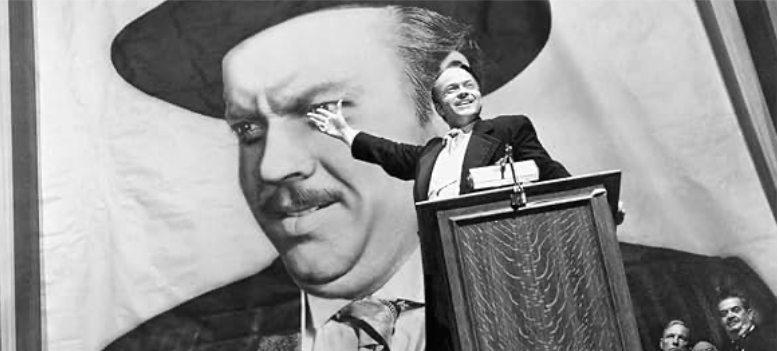
Lawrence of Arabia (1962)
Directed by David Lean. Starring Peter O’Toole, Alec Guinness, Anthony Quinn. Columbia Pictures, 1962. Rated PG.
Another critically acclaimed picture that is as intellectual as it is technically stunning is Lawrence of Arabia. This film is memorable for its sprawling desert landscapes and larger-than-life portrayal of T. E. Lawrence, the English lieutenant who led the Arabian army in a war against Turkish forces during the early 1900s. It is an epic in every sense of the word and is a must-see for anybody who can handle its mature subject matter.
The story focuses less on the external circumstances of the war than on Lawrence’s war with himself, including his sadistic tendencies. While some historians have criticized the film for its inaccurate depiction of the real Lawrence, this only makes for a compelling conversation.
Lawrence of Arabia complements Challenge IV discussions of World History and the Old Testament, for students can draw thought-provoking comparisons between Lawrence and other leaders of the past. At one point, Lawrence even sees himself as another Moses, setting himself up for further comparisons between himself and various people from the Bible.
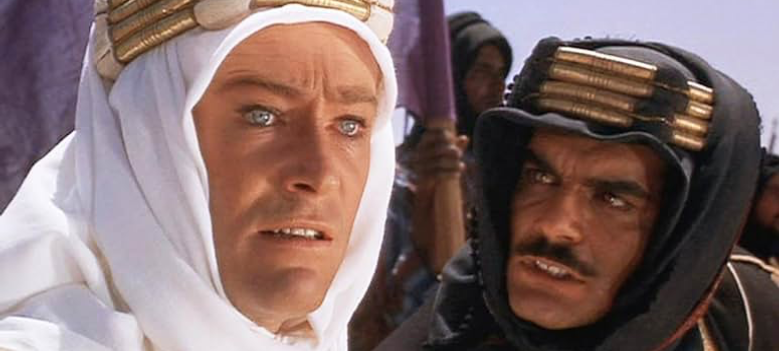
My Fair Lady (1964)
Directed by George Cukor. Starring Audrey Hepburn, Rex Harrison, Stanley Holloway. Warner Bros., 1964. Rated G.
Although musicals are widely enjoyed for their exuberance and catchy melodies, it is likely not the first genre that viewers turn to when they are looking for something thoughtful or challenging. An exception is George Cukor’s adaptation of the Broadway production, My Fair Lady, which rewards both the brain and the senses.
In My Fair Lady, the songs do not merely add to the plot; they advance the story. The film takes place in Edwardian England, where phonetics Professor Henry Higgins (Rex Harrison) wagers his ego to transform a working-class flower girl named Eliza Dolittle (Audrey Hepburn) into a member of the elegant upper class.
An important plot point is that the professor is absolutely repulsed by Eliza’s Cockney accent. The possibility that class is determined by one’s accent or vocabulary is a surprisingly deep theme for a musical, and it is cheerfully debated in unforgettable numbers such as “Why Can’t the English?,” “Wouldn’t It Be Loverly,” and “The Rain In Spain.”
My Fair Lady is a delightful film for ages six and older, but it is especially recommended for Challenge II’s study of British literature. Themes of courtship, class distinction, and feminism – which are covered in books such as Pride and Prejudice and A Passage to India – are all explored in My Fair Lady. The result is a film that is both classical and entertaining.
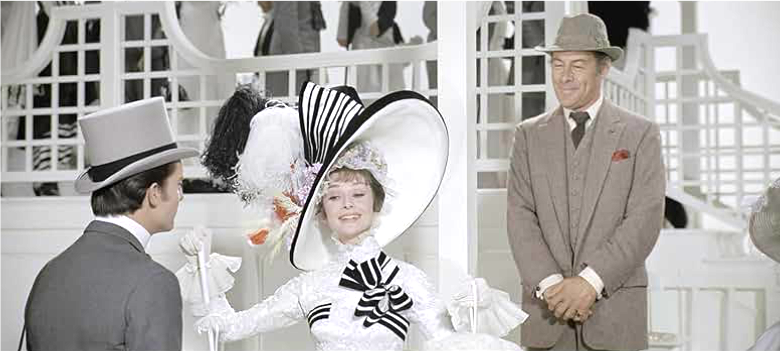
2001: A Space Odyssey (1968)
Directed by Stanley Kubrick. Starring Keir Dullea, Gary Lockwood, William Sylvester. Metro-Goldwyn-Mayer, 1968. Rated G.
While George Lucas and James Gunn’s science fiction franchises are good as popcorn entertainment, Stanley Kubrick’s vision of outer space and humankind is so complex and profound that a deep analysis is almost essential in order to fully appreciate it.
Compared to Star Wars or Guardians of the Galaxy, this one-of-a-kind film can seem slow or even boring. Viewers will not find thrilling action sequences or white-knuckle encounters with monsters, but they will find an intricate commentary on the universe’s origins and the evolution of mankind.
Perhaps the film’s most startling feature in this day and age, when artificial intelligence is on the rise, is its depiction of the advancement of technology to the point where it threatens to overthrow mankind.
While Christian families may not appreciate 2001: A Space Odyssey’s stance on Darwinism and evolution, the movie has so much to dissect and discuss. The film serves as a great counterpoint to the Challenge B readings of Defeating Darwinism by Philip E. Johnson. Additionally, it can enhance the Challenge IV discussions of The Discoverers by Daniel J. Boorstin and its exploration of the inventions and discoveries by which mankind has progressed throughout history.

Stalker (1979)
Directed by Andrei Tarvosky. Starring Alisa Freyndlikh, Aleksandr Kaydanovskiy, Anatoliy Solonitsyn. Mosfilm, 1979. Not Rated.
Russian filmmaker Andrei Tarvosky’s science fiction masterpiece, Stalker, is not necessarily an easy watch, due to its nearly three-hour runtime and intense philosophical conversations. Yet, the film represents the pinnacle of moviemaking, with its gorgeous imagery and an extremely profound screenplay that delves into the meaning of human existence.
The plot follows three men who venture across forbidden territory and into the Zone, which is said to contain a room where one’s wishes and dreams can come true. But Tarvosky is not interested in making a conventional, fast-paced adventure movie; this is rather an excruciatingly beautiful drama in which the men meditate on the meaning of everything in the universe, including themselves. The pacing is often slow, but the power of the dialogue alone makes it worthwhile.
Few films would complement study of philosophy in Challenge III better than Stalker. Keep in mind that although the film is viewable on streaming services, it is only available in subtitles.

My Dinner with Andre (1981)
Directed by Louis Malle. Starring Wallace Shawn, Andre Gregory, Jean Lenauer. Saga Productions Inc., 1981. Rated PG.
My Dinner with Andre is essentially a filmed, scripted conversation between actors Wallace Shawn and Andre Gregory, who play themselves in a fictionalized scenario in which they have dinner and discuss various subjects. One might not think that a movie in which the characters do nothing but talk would be even marginally interesting, but My Dinner with Andre is surprisingly entertaining.
Whereas many films settle for lackluster dialogue scenes in order to focus on the action sequences, Louis Malle directs Shawn and Gregory’s conversation to the smallest detail, capturing every facial expression, gesture, and furrowed brow. It is a supreme example of body language; those who are about to give a speech before their class should take notes.
My Dinner with Andre should be seen at least once by all Challenge students and directors, especially those who desire to improve their Socratic dialogue skills. There is also a good chance that they will want to watch My Dinner with Andre many more times, simply because it is such a great movie. More than any other film, this underseen 1981 classic embodies the spirit of Classical Conversations.
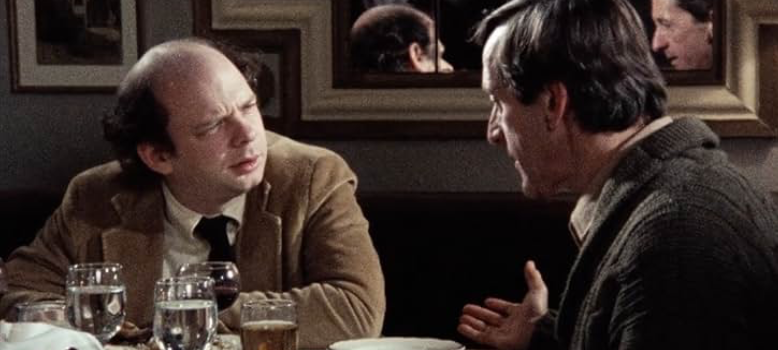
The Tree of Life (2011)
Directed by Terrence Malick. Starring Brad Pitt, Sean Penn, Jessica Chastain. Fox Searchlight Pictures, 2011. Rated PG-13.
Watching Terrence Malick’s The Tree of Life is like staring into a kaleidoscope of the most stunning imagery from all corners of the universe. The film is gorgeously shot and impeccably crafted, but the main reason it is included on this list is the way it so beautifully explores a family’s shared grief over the loss of their adult son.
The Bible verse at the beginning of the film seems to summarize what The Tree of Life is all about: “Where were you when I laid the foundations of the Earth, when the morning stars sang together, and all the sons of God shouted for joy?” – Job 38: 4,7 (translation unknown). Unlike Job, who surrendered his fate to the hands of God, the O’Brien family questions and doubts the Creator of the universe.
At that moment, the film flashes back to the beginning of the universe, which appears to be a visualization of the Big Bang Theory except that what is shown on screen is too good and beautiful to have “just happened.” The film then narrates the childhood of Jack O’Brien (Hunter McCracken) before flashing forward to his adult life (where the character is played by Sean Penn), in which he and his parents (Brad Pitt and Jessica Chastain) find peace with God.
On the surface, The Tree of Life is an incredibly beautiful film that satisfies the eyes and ears. But Malick’s film also poses deep questions about spirituality, the origins of the universe, and the importance of humankind in relation to the universe and its Creator.
Showing this film to a Challenge B class may greatly enhance the discussion of Defeating Darwinism by Philip E. Johnson, but The Tree of Life is such an excellent picture that I would recommend it to anybody thirteen years or older.
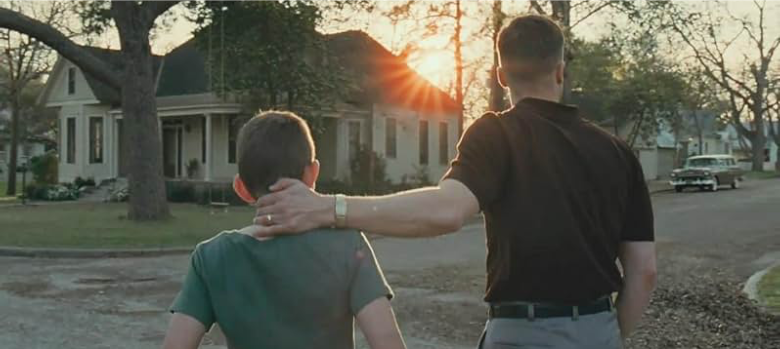
The Zone of Interest (2023)
Directed by Jonathan Glazer. Starring Christian Friedel, Sandra Hüller, Johann Karthaus. A24, 2023. Rated PG-13.
The most recent – and arguably the most chilling – title on this list is Jonathan Glazer’s The Zone of Interest. Despite winning two Academy Awards, it was unfortunately overshadowed by the major successes of other 2023 films. In this deeply disturbing film, an Auschwitz commander (Christian Friedel) leads a dual life of building the ideal house for his wife and children – right outside the concentration camp where he works as an officer.
The true horrors of World War II are never really seen, but they are heard. Seemingly innocent images of the Polish family watering the plants or playing in the pool are accompanied by offscreen wailing, leaving little to the imagination as to what is taking place behind the garden wall.
The commander and his family pay zero interest to the fact that his work is responsible for the deaths of thousands of innocent victims. The Zone of Interest is a scarring reminder that the worst of evils can exist in our everyday lives, without our even knowing it.
This may seem like a downbeat title to conclude this list, but The Zone of Interest is too thought-provoking and flawlessly executed to not warrant it a recommendation. While the film could complement discussion of Lois Lowry’s Number the Stars in Challenge A, it might be better to wait until Challenge B when students read Corrie ten Boom’s The Hiding Place, whose darker tone and subject matter is closer to the material portrayed in The Zone of Interest.
Parental discretion is strongly advised for this film. It is also worth mentioning that this film was made in Polish and is currently only available with English subtitles.

Final Thoughts
The films listed above are proof that movies can still do more than entertain us; they can provoke us, make us think, and turn us into better people than we were a few hours ago. These movies will probably continue to inspire audiences – intellectually and viscerally – as long as mankind can create and appreciate great art.
For Further Learning
The Seventh Art by Ibrahim Hussein
AFI’S 100 Years...100 Movies — 10th Anniversary Edition by American Film Institute

Comments